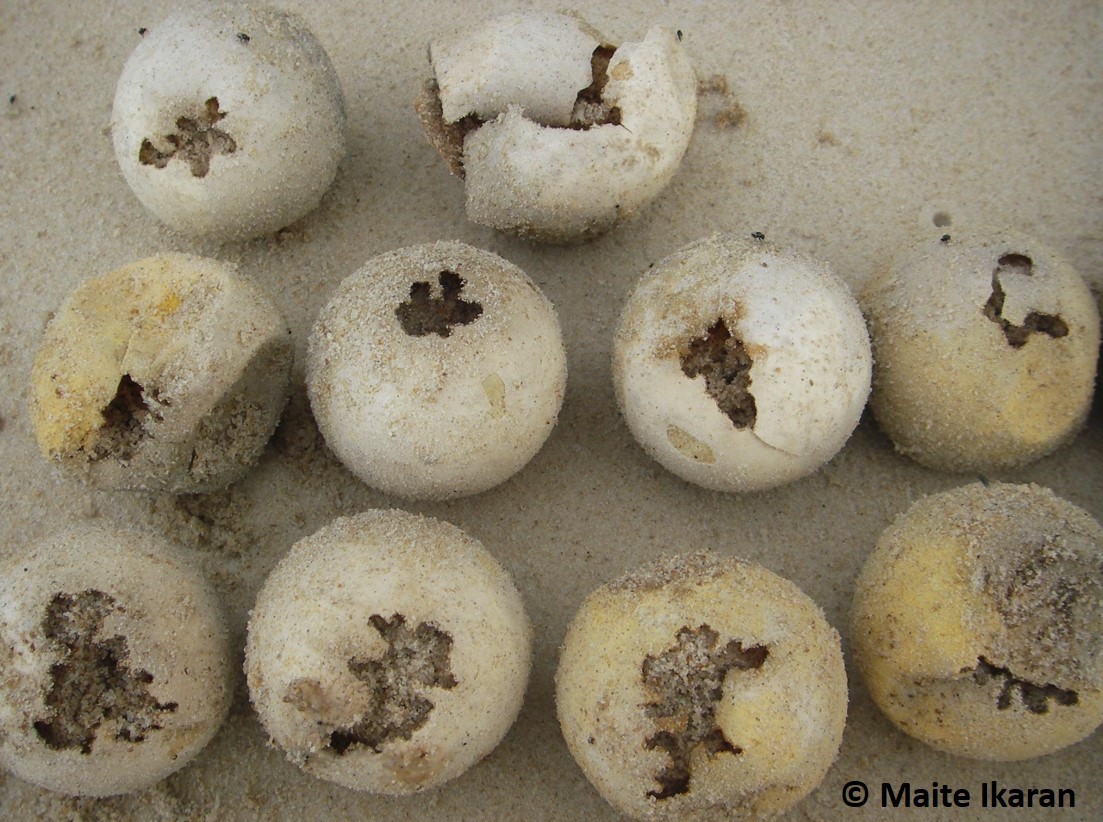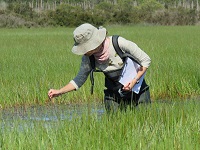Egg mortality is one of the main factors affecting life history and conservation of oviparous species. A massive and cryptic colonisation of many leatherback turtle (Dermochelys coriacea) eggs is presented in the most important rookery for the species in Gabon. A total of 163 nests were exhumed at Kingere beach, revealing that only 16.7% of eggs produced hatchlings. In the 59% of the nests, more than half of the eggs were dead and attacked by invertebrates and 94% had at least one egg affected by invertebrates. The rate of eggs and SAGs (yolkless eggs) affected by invertebrates within a clutch ranged from 0% to 100%, with an average proportion of 39% and 52%, respectively. The most common invertebrates interacting with the eggs were ghost crabs and insects that affected 51% and 82% of the nests, respectively. Crab and insect co-occurred in 33% of the affected nests. Ants, identified as Dorylus spininodis (Emery 1901) were found in 56% of the excavated nests. However, it was not possible to determine if the ants predated alive eggs or scavenged dead eggs. Very often, hundreds of ants were found drowned within dead eggs. Termites and other invertebrates were associated with the clutch environment and identified as opportunistic feeders, being this is the first record of interaction between termites and sea turtle eggs. An unusual ecological interaction within the leatherback clutches between termites and ants was found in 11% of the nests. The abrupt transition between the soil forest and the beach might be favouring a thriving microbial and invertebrate activity in the sand profile that colonises the nests. informacion[at]ebd.csic.es: Ikaran et al (2020) Cryptic massive nest colonisation by ants and termites in the world's largest leatherback turtle rookery Ethol Ecol Evol 2020. Doi 10.1080/03949370.2020.1715487
https://www.tandfonline.com/doi/abs/10.1080/03949370.2020.1715487


 La Fundación Jaime González-Gordon ofrece cuatro becas para el desarrollo de Trabajos de Fin de Máster sobre Doñana
La Fundación Jaime González-Gordon ofrece cuatro becas para el desarrollo de Trabajos de Fin de Máster sobre Doñana
